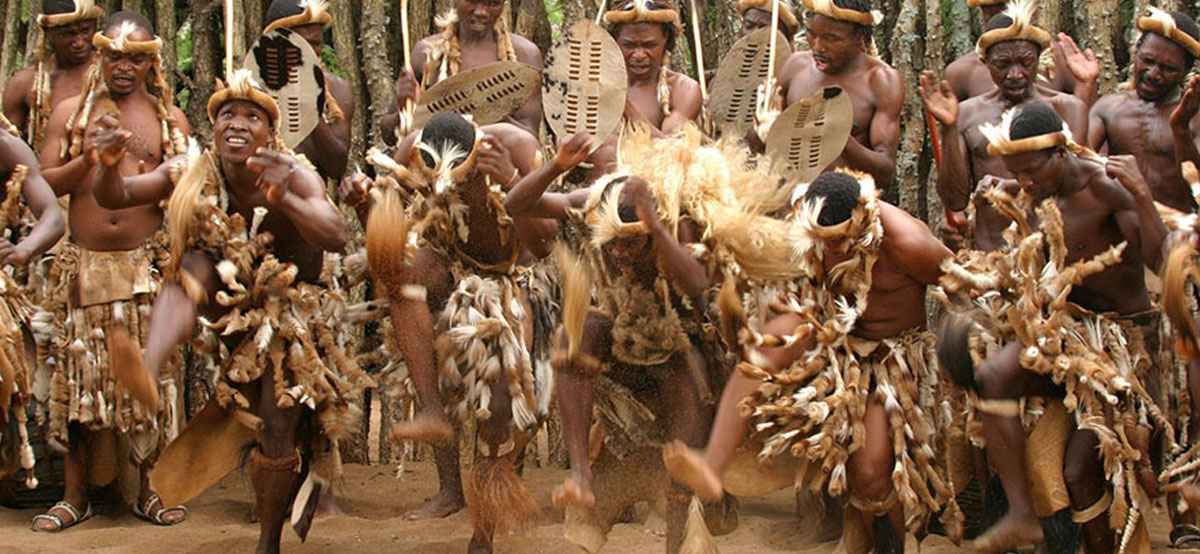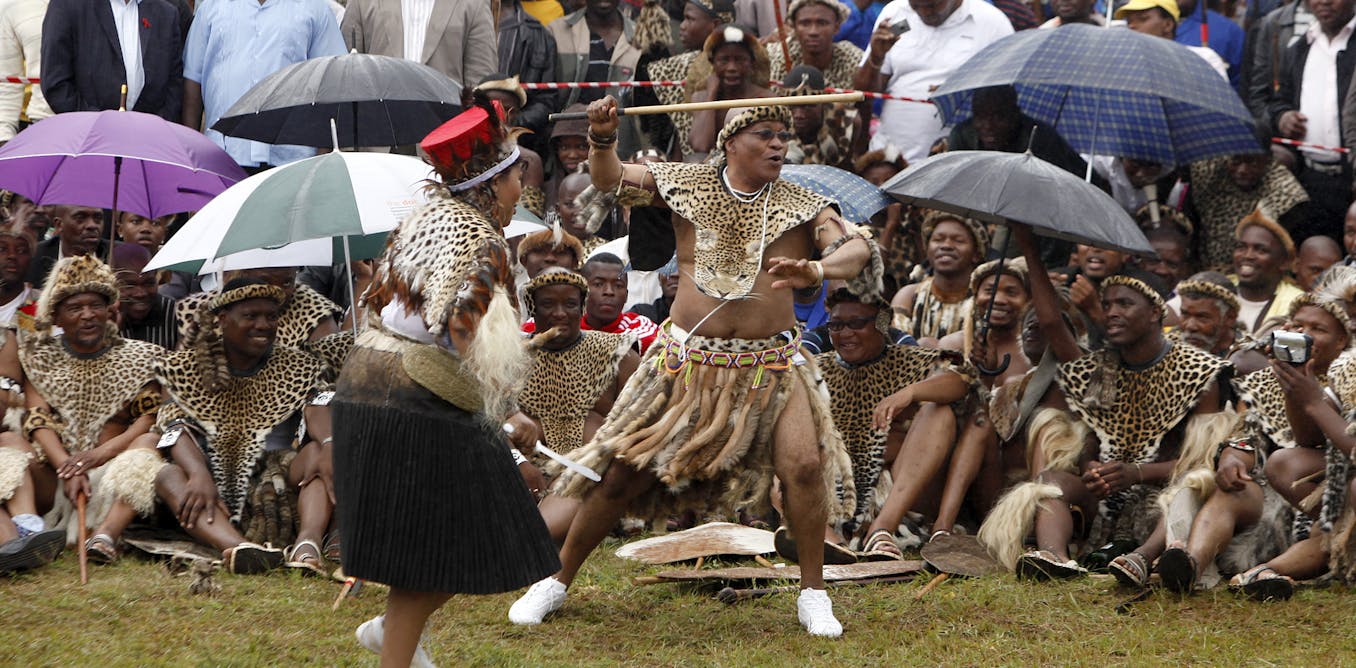Getting My South African Culture Today To Work
Getting My South African Culture Today To Work
Blog Article
The Basic Principles Of South African Culture Today
Table of ContentsSouth African Culture Today - An OverviewAn Unbiased View of South African Culture Today7 Easy Facts About South African Culture Today DescribedThe South African Culture Today StatementsUnknown Facts About South African Culture TodayAn Unbiased View of South African Culture Today
This adheres to with vocal singing and drum pounding. The couple after that meet the seniors and speak regarding the value of their union. A matter of significance in Zambian villages is the passing away of loved ones. All participants of the town placed money, effort and time together for the funeral of the deceased.Music and dance is a really essential aspect of the Zambian society. The different tribal units have their very own dance kinds; nevertheless, makishi is common among all tribes.
The Best Strategy To Use For South African Culture Today
When it pertains to music, drums are made use of the most, with a variety of drumming events. In Zambia, bulk of individuals are Christian; Protestant and Roman Catholic. There are tiny groups of Muslims and Hindus, with the remainder following regional native tribal beliefs.

South African heritage and society is profoundly varied, and includes many various groups of people that each have their own traditions and ideas. Having such a diversity of individuals and societies is what makes South Africa so distinct. In the real feeling of the phrase, we are a rainbow country.
South Africa has around three hundred thousand Portuguese individuals residing in it. Making it the 7th on the list of nations with the most Portuguese individuals in it outside of Portugal. Portuguese is not just a culture, yet it is likewise a language and a nationality. Portuguese individuals originate from the nation of Portugal in Europe, nevertheless, as a result of Portugal (like lots of other countries in Europe) exploring the world and conquering other nations during the 15th 20th centuries, South Africa has what we call Portuguese South African's living in it.
All About South African Culture Today
Among the popular functions of the topography is a plateau that covers nearly 2 thirds of the facility of the nation. The plateau facility climbs towards the southeast, where it climaxes in the Drakensberg range, part of an escarpment that separates the plateau from the coastal areas. The Drakensburg includes Champagne Castle, the highest top in the country.
The region north of the Witwatersrand, called the bushveld, slopes downward from east to west toward the Limpopo River, which forms the international border. The western section of the plateau, the middleveld, also comes down in the direction of the west and differs in altitude in between the highveld and bushveld. In between the Drakensburg and the eastern and southern shoreline, the land descends to the sea.
Nearer the coast there is a low-lying plain called the eastern lowveld. Southwest of the plateau the nation comes to be considerably extra dry, offering means to the stony desert of the Great Karroo, verged on the eastern by the reduced, much better watered plateau of the Little Karroo. Separating the dry southerly inside from the sandy coastal of the southern coast and West Cape is another array, the Langeberg.
An Unbiased View of South African Culture Today
The country's racially, ethnically, and politically divided background has generated national and subnational symbols that still work as symbols of the nation, and others symbols that are approved only by particular groups. The monoliths to white settler occupation and political supremacy, such as the Afrikaner Voortrekker ("leader") Monument in Pretoria and the Rhodes Monolith honoring the British colonial empire builder and Cape prime preacher Cecil Rhodes, remain sectarian icons.
The first modern-day residents were the San ("bushman") hunter-gatherers and the Khoi ("Hottentot") individuals, who herded animals (South African culture today). The San may have been existing for thousands of years and left evidence of their visibility in thousands of old cavern paintings ("rock art"). Bantu-speaking clans that were the forefathers of the Nguni (today's amaZulu, amaXhosa, amaSwazi, and vaTsonga individuals) and Tswana-Sotho language groups (today's Batswana and Southern and Northern Basotho) migrated below east Africa as early as the fifteenth century

Both previous republics of the Orange Free State and Transvaal (South African Republic) were established by Afrikaner settlers who defeated and dispossessed the Basotho and Batswana. Lesotho would have been forcibly incorporated right into the Orange Free State without the expansion of British security in 1869. The utmost unification of Source the nation resulted from the South African Battle (18991902) between the British and the 2 Afrikaner republics, which lowered the nation to wreck at the start of the twentieth century.
Afrikaners traditionally considered themselves the just true South Africans and, while giving full citizenship to all residents of European descent, refuted that condition to people of color until the autonomous change of 1994. British South Africans maintain a sense of cultural and social link to Great Britain without damaging their identification as South Africans.
South African Culture Today - The Facts
The diversity and fragmentation within ethnic groups and the equilibrium of tensions in between those groups throughout the twentieth century avoided interethnic civil problem. While intergroup tensions over sources, entitlements, and political prominence stay, those problems are as likely to match Zulu against Zulu as Zulu versus Xhosa or African against Afrikaner.
From colonial India, British vendors and administrators brought the rounded steel ornamental roof coverings and additional hints slender shoelace work pillars that still typify the outdoor patios of homes in towns and cities throughout the nation. Houses of prayer add a vital building aspect also in the tiniest towns. In addition to the skyrocketing steeples and timeless stonework of Afrikaans Dutch Reformed churches, Anglican churches, synagogues, mosques, and Hindu shrines supply selection to the religious architectural scene.

Slaughtering and the developing of typical grain beer are essential in securing the participation and goodwill of the ancestors that are considered the guardians of good lot of money, success, and health. Indian areas preserve their native culinary traditions and use them on Islamic and Hindu routine and ritualistic events. Afrikaners and Coloured people gather at weekend breaks and unique events at multifamily barbeques called braais, where community bonds are strengthened.
Due to the fact that this was the key financial business of both black Africans and white colonists, conflict in between those groups centered on the possession of grazing land and animals. In 1867, the largest diamond down payments worldwide were discovered at Kimberley in the west main location. The wealth from those areas aided finance the exploitation read this post here of the best gold coral reef worldwide, which was discovered on the Witwatersrand in 1886.
The Best Strategy To Use For South African Culture Today
This led to misunderstandings and deliberate misrepresentation in the transactions of white settlers and federal government authorities with African chiefs throughout the colonial period (South African culture today). In the facility of African books, some aspects of common and primarily "tribal count on" land period were preserved, and even in white country areas, types of public tenure were still practiced in locations with African areas
After the democratic improvement of 1994, programs for land restitution, redistribution, and reform were set up, but development has actually been slow-moving. The white minority still controls eighty percent of the land. In the wake of farming land intrusions in Zimbabwe, the Department of Land Affairs has promised to speed up land redistribution.
Report this page